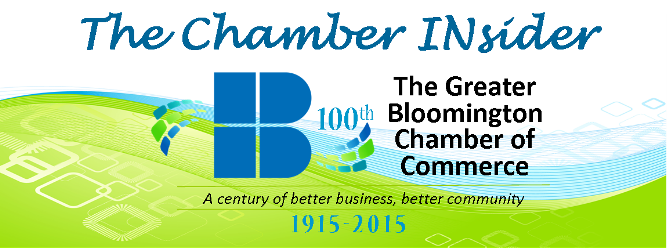The Chamber recently hosted an ABC luncheon presented by the very talented Linda Dausend (South Central Indiana Human Resources Association) on the subject of Networking. Networking is one of the single most important aspects of doing business. Everyone has experienced those awkward and anxiety producing moments at a networking event. But you also know that these events are necessary to build better business relationships. Here are Linda’s helpful hints for making the most out of your networking events and having fun while doing just that!
Katie Bruhn
Member Services Coordinator
Regardless of your feelings on the subject, when attending an event, it’s important to have the perspective that your goal should be to help others first. Unfortunately, it’s an old cliché that is often left at the door. The next time you’re headed to an event, keep in mind the following simple, helpful rule: after it’s all said and done, you want to have earned the right, privilege, honor, and respect to be able to meet with them again. This is not a license to sell yourself, but an opportunity to build a relationship.
1. When you arrive at a networking event, avoid gravitating to people you know. You should initially thank the host and then immediately find someone new to introduce yourself to. This will help keep you in the right frame of mind as to why you came.
2. Stop selling and start listening! When you meet someone for the first time, use it as an opportunity to get to know them. Don’t try to sell them anything. Rather, begin to establish a relationship.
3. Keep your business cards in the breast pocket of your coat, a shirt pocket, or in an outside pocket of your purse so they are easy to access and in good condition.
4. When giving a person your card, personalize it by hand writing your cell number on it. This will cause the recipient to feel that they are receiving something special.
5. When giving or receiving a business card, be especially careful when dealing with people from outside the US as many cultures treat them with very high regard.
6. When receiving a card from someone, take a moment to write yourself a note on it such as where you met. If you do this while you’re still talking to the person, it will help convey your sense of personal connection.
7. During the course of a conversation, use the other person’s first name two or three times. People always like to hear their own name and it will help you to remember it when the discussion is over.
8. Rather than telling a new contact all about yourself, spend your time asking them questions. It’s amazing how much you’ll learn!
9. After you meet someone for the first time, use the back of their business card to jot a note about something you learned from the conversation and the date and place you met them. Recording the information will give you something to talk to them about the next time you see them.
10. Connect with the person you’re talking to by tilting your head as you listen to them. It is an effective body language technique which communicates that you’re paying attention to what they’re saying.
11. When a person is talking to you, be sure to look directly at them. Giving a person full attention with your eyes will encourage them to share more.
12. When giving someone eye contact, remember it’s not a “stare-down” contest. Give the person 3-5 seconds of eye contact and then look away briefly before returning your focus to them again.
13. The best location to network is by a high-traffic area such as a main door, the bar, or near the food.
14. Never approach someone if they are walking towards the restroom or if they have a phone in their hand. Wait until they have returned to the networking area or put their phone away.
15. After the person has shared something with you, ask them another question about what they just said. This shows that you’re paying attention and that you care about what they’re telling you.
16. Always keep one hand free to allow yourself to shake hands with people. This means that you shouldn’t eat and drink at the same time. Remember, you’re there to network, not eat a full-course meal.
17. As a way of demonstrating your networking skills, introduce each new person you meet to at least one other person.
18. Never try to barge into a group of 4 or more people. Come along side of the group, but do not attempt to enter into the discussion until you’ve made eye contact with everyone and a minimum of two other people in the group have said something.
19. Do not approach two people who are talking, as you may be interrupting an important discussion.
20. Initiate conversation with someone who is standing by themselves. They’ll be happy to have someone to talk to them and, as a result, will many times open up with valuable information.
21. When you meet someone for the first time, you have 48 hours to follow up with them before they will completely forget about meeting you.
22. A networking event is not a time to see how many business cards you can acquire. Rather, it is a time to develop a few relationships that have potential.

